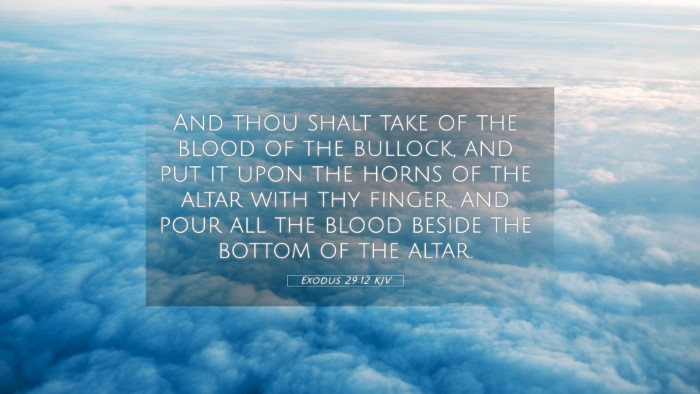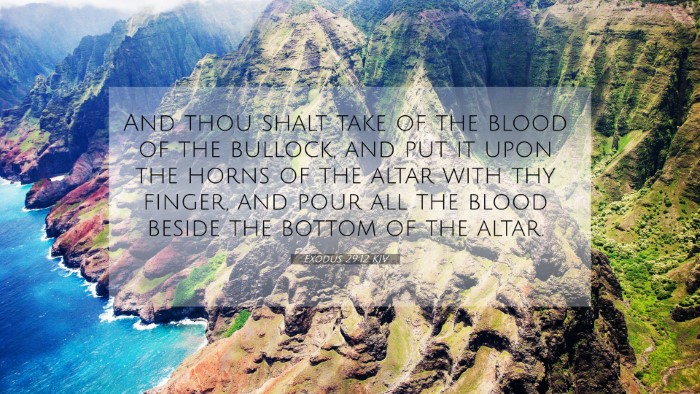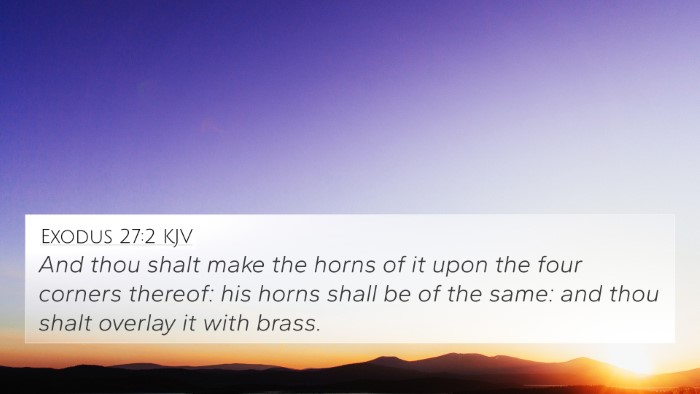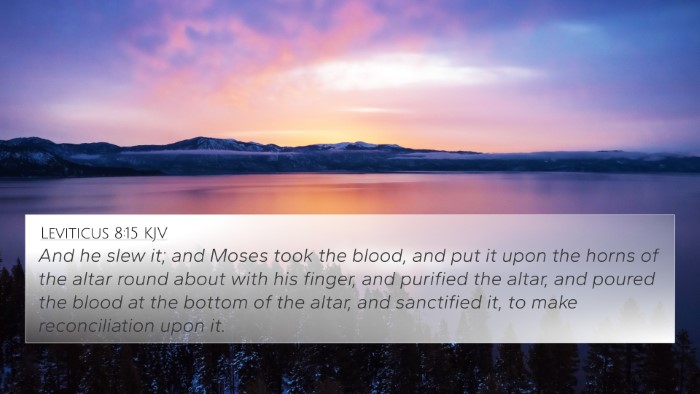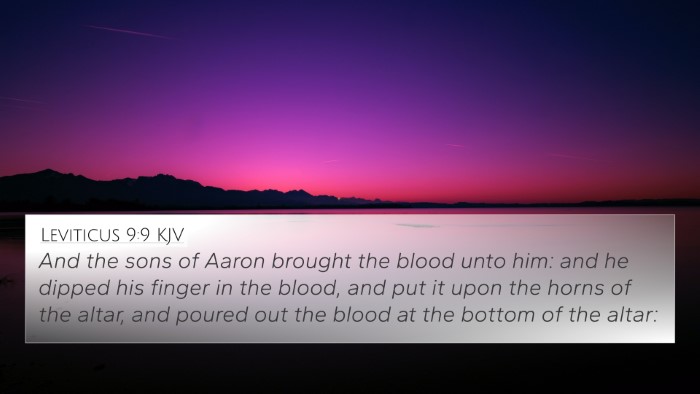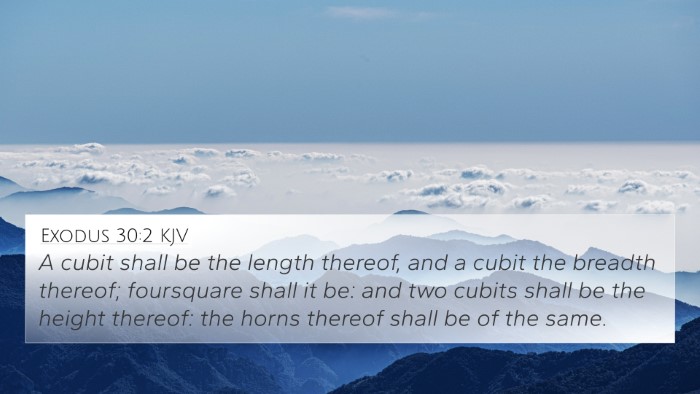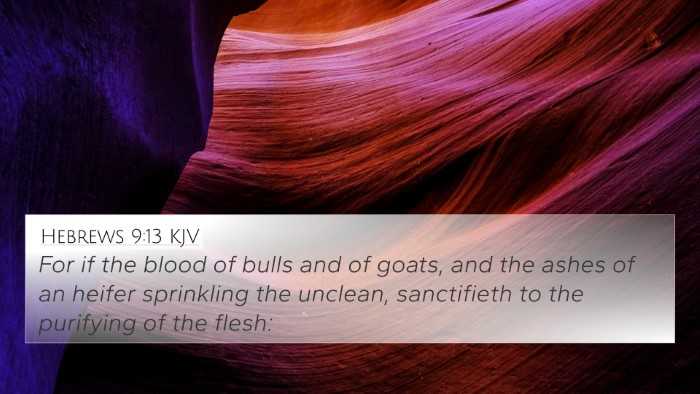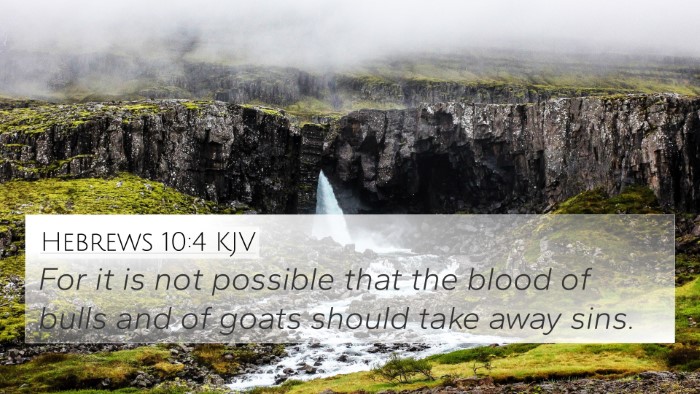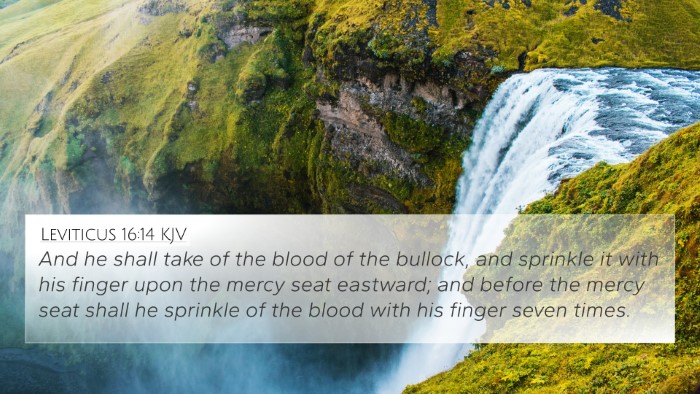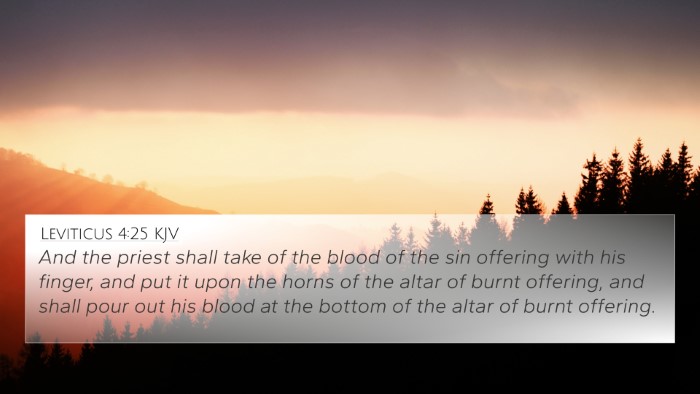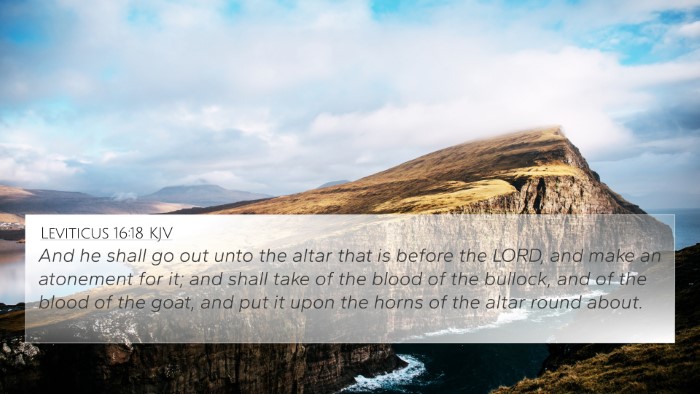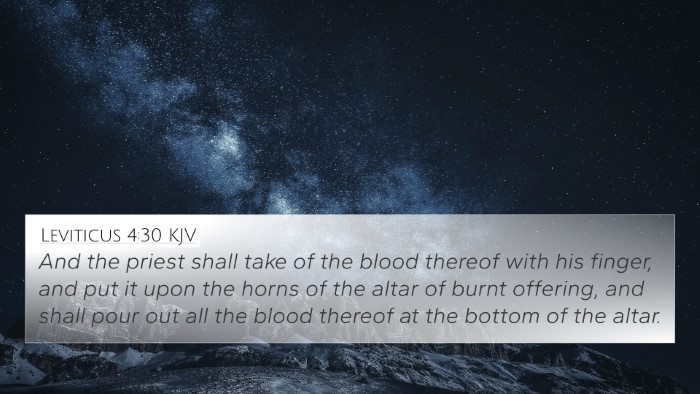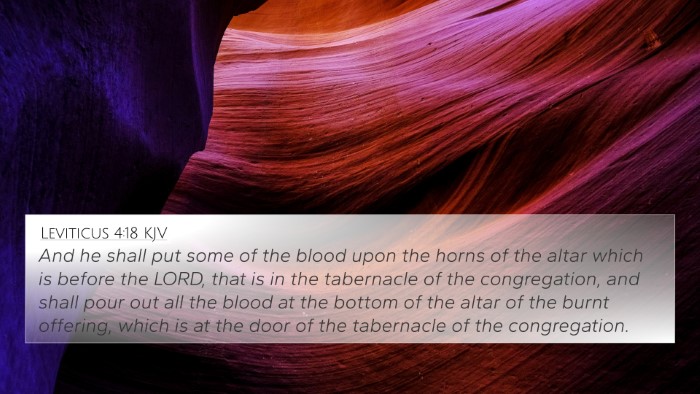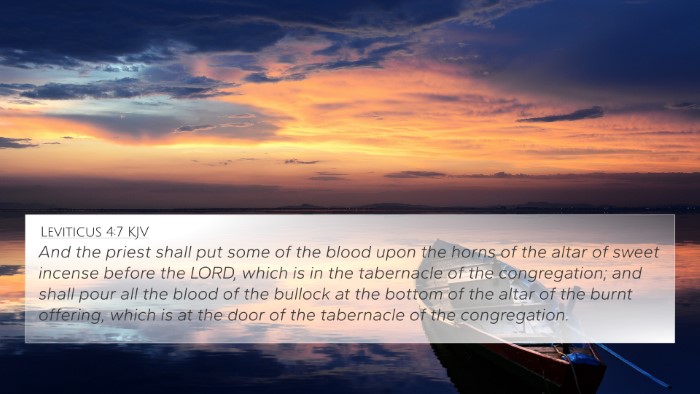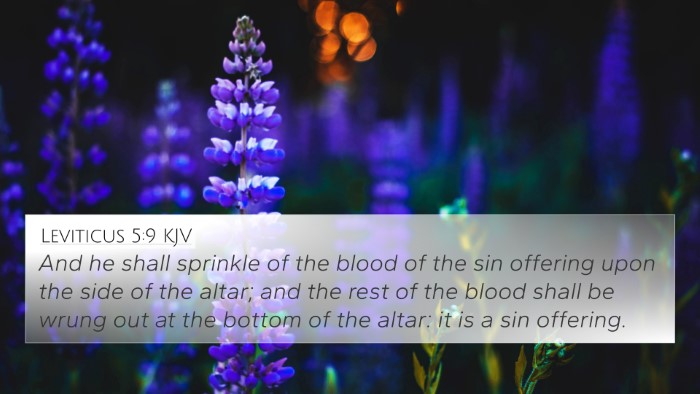Understanding Exodus 29:12
The passage from Exodus 29:12 is pivotal in the context of the consecration of the priests within the Old Testament laws. This verse reads:
"And thou shalt take of the blood of the bullock, and put it upon the horns of the altar with thy finger, and pour all the blood beside the bottom of the altar."
Meaning and Significance
This verse elaborates on the ritualistic aspects of old covenant worship and the significance of blood in the process of atonement and consecration.
Key Themes in Exodus 29:12
- Blood as Symbol of Atonement: The blood signifies life and serves as a means of atonement for sin, as discussed by Matthew Henry. This act illustrates the gravity of sin and the requirement of sacrificial blood to approach a holy God.
- Consecration of the Priest: The act of applying blood upon the altar symbolizes the setting apart of the Aaronic priesthood for God's service, as noted by Albert Barnes. This established a serious and solemn duty for the priests in their mediating role between God and the people.
- Significance of the Altar: Adam Clarke emphasizes the altar's role as a place of meeting with God. By applying blood to its horns, the altar is reaffirmed as sanctified space, holy and dedicated to divine worship.
Cross-References for Deeper Understanding
To appreciate fully the implications of Exodus 29:12, we can cross-reference several related verses:
- Leviticus 4:7: Discusses the application of blood on the horns of the altar, enhancing the understanding of atonement.
- Hebrews 9:22: Points out that without the shedding of blood, there is no remission. This connects to the significance of blood in sacrificial rites.
- Exodus 24:6: References the blood of the covenant, paralleling the covenantal significance of sacrificial acts.
- 1 Peter 1:19: Where Christ is presented as the ultimate sacrifice, connecting the Old Testament practices to New Testament fulfillment.
- Hebrews 13:10: Discusses the altar where we have an offering not made by the law, bridging the old covenant with the new.
- Matthew 26:28: Jesus references His blood, which starkly relates the Old Testament sacrificial system with salvation through Christ.
- Exodus 30:10: Speaks to the sin offering and the implications of atonement in the context of the altar rituals.
Comparative Analysis with Other Scriptures
Linking Bible scriptures often reveals profound thematic connections. For instance, in Romans 3:25, we find that God presented Christ as a sacrifice of atonement, drawing a significant line from the Old Testament sacrifices to Christ's ultimate sacrifice. This comparative analysis underscores the continuity of God's plan for redemption throughout the biblical narrative.
Tools for Bible Cross-Referencing
To delve deeper into scriptural cross-referencing, consider employing:
- Bible Concordances: These can guide you in identifying relevant passages that share thematic elements.
- Bible Cross-Reference Guides: Helpful for finding explicit cross-connections between verses.
- Comprehensive Bible Cross-Reference Materials: Providing in-depth analysis and links between paired scriptures.
- Online Bible References: Digitized resources that can quickly lead readers to parallel verses.
Conclusion
Exodus 29:12 highlights the essential practice of blood application in the sacrificial system, a concept that resonates throughout both the Old and New Testaments. By utilizing tools for Bible cross-referencing and by examining connections between Bible verses, readers can gain a richer understanding of how God’s covenant unfolds over time and its implications for believers today.
Further Study Suggestions
For those interested in further theological exploration, consider pursuing studies that focus on:
- Identifying Connections Between Old and New Testament: Explore how the themes of sacrifice and atonement transition through the scriptural narrative.
- Cross-Referencing Psalms with New Testament Teachings: Study how petitions in Psalms find fulfillment in the life and teachings of Jesus.
- Detailed Cross-Reference Between Gospels: Analyze how different Gospel writers communicate similar events with varying details.

